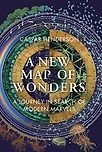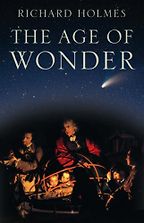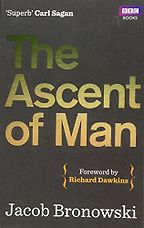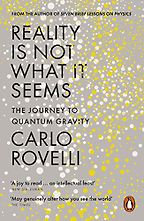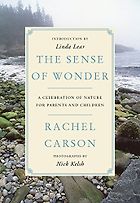Why are you interested in science and wonder?
I think wonder is very important for individual well being and society as a whole, and in our culture science is one of the ways—arguably a leading way—in which we access it. Just think of the amazing pictures of astronomical phenomena such as nebulae and galaxies that are produced by modern telescopes.
Tell me about how you came to write A New Map of Wonders. I seem to recall it wasn’t prompted by a huge scientific spectacle.
There’s a little story at the beginning of the book about a fairly mundane and yet wonderful trick of the light in my kitchen one morning. It was just a moment when an apparently simple phenomenon connects to much more than the thing itself. Wonder is many things—and there are many good definitions out there of what it’s about and its place in human psychology, and so on. But I think that wonder is, among other things, an act of deep attention. As I try so show in the book, it’s a radical openness in which we think clearly and feel good, and connect to phenomena or people beyond ourselves.
When one has these moments, it makes one think what more is going on here? What’s the context in which this is happening? Why, as a briefly-alive, historically-situated being, why am I wondering at this rather than something else? What role does this experience play in my own sense of what makes the world meaningful? Where does that come from? Where is it going? In moments of wonder—this is my experience—you’re aware of your own ignorance, your own limits, your smallness, your mortality, and, also, I feel okay with that.
“Wonder is, among other things, an act of deep attention”
The philosopher Roberto Mangabeira Unger talks about the groundlessness of human existence and this astonishment that we exist, that anything exists at all. Every now and then some of us will look at this, why do we exist at all? But wonder is a way of facing and being present to this mystery not without fear but without terror. It’s a kind of positive fear. That’s what I guess awe is, in a sense. Although I would say that while wonder overlaps with awe and with curiosity it’s not the same as either of those two things.
I’m from an arts background so I did find out quite a lot of new information reading your book. I had no idea, for example, that rainbows always appear at a certain angle (40-42 degrees) to the viewer.
I was interested in science as a kid but I was better with words than numbers and I wasn’t always patient so like you I ended up studying the arts. But one of the things that surprised me when I worked on this book was how little many of us know outside our own areas of specialty. When, for example, I was researching the human heart I went to talk to people who knew a lot about the heart. That was fascinating. But those same people sometimes knew little—sometimes even less than me!—about something else I was also researching for the book. And I could see that for them too it was fascinating and wonderful to learn a little more about things they didn’t know before.
So even though the contents of a given chapter—say the one on light, which describes some of the wonders of the rainbow—would hardly get to square one for a specialist, still, for those who are not specialists it offers a way in. And I hope that even people who know a lot more about any given topic in the book will still find something else in other areas to engage them, because most of us, most of the time, don’t have time to learn much beyond our own narrow fields.
It was only when I started paying attention for this book that I began to realise how little I knew about rainbows, among many other things. I had a general idea about refraction and reflection in water vapour but that was pretty much it. And the more I learned the more, not less, wonderful rainbows became. That particular observation about the angle of the rainbow dates to at least Roger Bacon in 1266, but I didn’t know it either until I started researching for this book.
The first book you recommend is The Age of Wonder (2008) by Richard Holmes. The Sunday Times review says that reading this book is “like a holiday in a sunny landscape” which I thought was a lovely description. It’s history of science, isn’t it?
It’s a splendid book. Richard Holmes is a literary biographer. He is well known for a two-volume biography of Samuel Taylor Coleridge, which was published 5-10 years before this. It’s a group biography of writers and scientists in the late 18th and early 19th century—Herschel and Humphrey Davy on the science side, and the Romantic poets, mostly in England, and their engagement with the sublime and with science.
Among Holmes’s qualities are his warmth, his extraordinary depth of knowledge and the fluency in his writing. It’s just a really enjoyable read. It’s particularly germane to the topic of science and wonder because the period he’s writing about—which is roughly the 1770s through to the 1830s—is the time of the Romantics.
In Britain, if not necessarily elsewhere, we tend to think of the two cultures—C.P. Snow’s phrase from the 1950s—that there’s a culture of the arts and a culture of the sciences and never the twain shall meet. People will go back to William Wordsworth, for example, saying “we murder to dissect”—this loathing of the medics who will just tear apart a body and do not appreciate its integral beauty. Or John Keats’s line about how the touch of cold philosophy unweaves the rainbow. There’s a sense that science is inimical to beauty and wonder of life.
But one of the things that figures in Richard Holmes’s book is Coleridge’s great enthusiasm for science. Coleridge was friends with Humphrey Davy, a leading chemist of the age, a great discoverer and a scientific entrepreneur. Coleridge was asked, ‘Why do you go to to all these lectures that they run at the Royal Institution?’ and he said, ‘to improve my stock of metaphors.’ He said that science being necessarily performed with a passion of hope is poetical.
So this book is enlightening to read if you still had this idea of the two cultures, to see that the same false dichotomy was playing out around the 1800s. In fact, it wasn’t a dichotomy at the time either, and it isn’t a dichotomy today. You even hear people today talking about the one culture. Even we arts graduates have some reasonable grasp of the second law of thermodynamics as well as the late plays of William Shakespeare. It’s an accepted part of our culture, that you need to know both — or at least that’s hope.
Your next choice is The Sense of Wonder by Rachel Carson (1965). So she’s more well-known for her book, Silent Spring, pioneering the environmental movement, but this book is an essay to her orphan nephew, isn’ it?
Yes, it started as an essay and she was going to turn it into a book but died of cancer before she could. I had a hard time choosing merely five books on this topic, and I would have liked to talk, among the American writers, about many others including, of course, Henry David Thoreau but also Loren Eiseley, Lewis Thomas, Annie Dillard.
In the end I chose Rachel Carson for several reasons. She was a very good scientist and a good writer. Also, she continues to be traduced by the anti-environmentalists. They claim she was a Luddite and responsible for the deaths of millions of people because she opposed the use of DDT. This is a grotesque lie. So I think it’s important to celebrate her work. She’s best known for Silent Spring, which is about the poisoning of terrestrial ecosystems and, of course, the extirpation of birdlife, but she was actually a marine biologist and before that, she wrote two marvellous book called The Sea Around Us and The Edge of the Sea.
“One of the things that science—wisely applied—can do, is blow that open to the radical openness that I was talking about, the sense of wonder. It makes us a little bit more humble and I think that’s what wonder’s about.”
The Sense of Wonder is a short piece, barely more than an essay really, though it exists in book form, and it’s essentially just a celebration of being in the world. As far as I know, it’s not often read but a few familiar lines from it tend to get trotted out. ‘If I had influence with the good fairy who is supposed to preside over the christening of all children,’ Carson writes, ‘I should ask that her gift to each child in the world should be a sense of wonder so indestructible that it would last throughout life, as an unfailing antidote against the boredom and disenchantment of later years, the alienation from the sources of our strength.’
It’s a fine sentiment. Some people find the way it is expressed a little cloying. I think I find it a bit cloying myself. But if you read the whole, it’s very fresh, it’s very immediate, and yes it is, it’s partly a love letter and some advice to her nephew. I’d like to quote another passage:
‘One stormy night when my nephew Roger was about twenty months old, I wrapped him in a blanket and carried him down to the beach in the rainy darkness. Out there, just at the edge of where-we-couldn’t-see, big waves were thundering in, dimly seen white shapes that boomed and shouted and threw great handfuls of froth at us. Together we laughed for pure joy, he a baby meeting for the first time the wild tumult of oceanus, I with the salt of half a lifetime of sealove in me. But I think we felt the same spine tingling response to the vast, roaring ocean and the wild night around it.’
So it starts with her baby nephew but ends touchingly with a letter she received from an 83-year old woman who she describes as still having that very intense sense of wonder about life. It’s a beautiful piece. And it’s important that it is written by somebody who was a very fine scientist, whose scientific work is still being denied in the context of a concerted strategy by vested interests to deny a lot of vital science with regard to environment and block action that is urgently required for the good of humanity and all life.
It makes sense that it’s addressed to a child. I do think children have more of a sense of wonder about how the world works and what things are, which maybe you lose as an adult.
We like to think so, but some people might say we have an over romantic idea of what children are about and it’s a little bit dangerous to generalise. I had a short but interesting conversation when I was writing A New Map of Wonders with the film maker Phil Agland, who has made a number of superb documentaries with the Pygmy people of the Congo and also in both remote and urban parts of China. One of the things he captures brilliantly in his recent series Between Clouds and Dreams is the revelatory wonder on the faces of children when they see film of an endangered little bird on the mudflats off the coast south of Shanghai.
When I was talking to him, he told me that you see this in these kids but then, when they go to the equivalent of secondary school, they enter this super intense system where they are beginning the long hard preparation for the gaokao exams and they get this wonder just thumped out of them. So maybe we can generalise, that, broadly speaking, kids in industrialised cultures have this sense of wonder and it gets a little beaten out of us.
The next book on your list is The Ascent of Man by Jacob Bronowski (1973). This was a TV series, but also a book.
Yes, the BBC published the book I have here. It’s pretty much the script of the TV series. The Ascent of Man was broadcast first at a remarkable time in British television. There was Kenneth Clark’s Civilization and John Berger’s Ways of Seeing in 1972, which I rate very highly, and, in 1973-4, Jeremy Isaacs’s The World At War.
The Ascent of Man is extraordinary television, and the book is a valuable document of it —-a way of accessing part of what Bronowski achieved. Some of the science he refers to —say with regard to DNA—has of course moved a long way forward since his time, but so much about the book remains relevant.
Part of the reason I chose this book is that in the past few years, the Israeli historian Noah Yuval Harari has published two books—Sapiens and then Homo Deus. They’re enjoyable but quite pessimistic and unforgiving in many ways. Harari is, perhaps, almost enjoying that bucket of cold water he’s pouring on your hopes and dreams, though he does it well and often convincingly. I gather he’s now writing a book on how to live in the 21st century, and I look forward to it. But after reading Sapiens and Homo Deus, Bronowski comes to mind because of his warmth and hope.
It’s about the same thing as Sapiens, where Man comes from?
That’s right. The title is an allusion to The Descent of Man, Charles Darwin’s hugely important work of 1871. It’s an attempt to look at cultural evolution—what it is, where it’s come from, where it’s going. And I think that one of the things that makes the book and TV series an enduring document is his optimism and the fact that he had earned the right to that optimism.
Bronowski was from Poland, and he was Jewish. He was a mathematician and he worked for the British during World War II. He was a friend of Leo Szilard who first proposed the idea of the atomic bomb to the British before the whole thing went to the US and became the Manhattan Project. At the end of the final episode of the series—which you can find on YouTube—he goes to Auschwitz, and in his suit and his dress shoes he walks into a wet ditch. It’s where the outflow from the crematorium was, where the ash sludge flowed—so that mud contains a trace of ash from millions of people including members of his family. He bends down and he picks up a handful of this slimy crud. And he says that when people believe they have absolute knowledge with no test in reality, this is how they behave. In other words, they become slaves and ghosts in the service of a terrible, evil idea.
“Attentiveness alone can rival the most powerful magnifying lens.”
And I think one of the central themes in the series is the importance of realising that we don’t have absolute knowledge, that patterns of social organisation tend to fall into a rigidity of doctrine and ideology over time. This often very dangerous. One of the things that science—wisely applied—can do, is blow that open to the radical openness that I was talking about, the sense of wonder. It makes us a little bit more humble and I think that’s what wonder’s about.
Of course the danger is when science is tied to evil ends as it often was in World War II, obviously. Science and technology and logistics and the rest of it made possible mass slaughter in Europe and East Asia and elsewhere.
It’s just a marvellous book and a wonderful series. It’s one of those things where you find you’re watching these faded, slightly strange-coloured 1970s images with this odd narrator who was actually an incredibly brilliant speaker and communicator. It’s a historical document now but it’s beautiful and wise.
Why do you think Bronowski’s so optimistic?
He says, “We are all afraid for our confidence, for the future, for the world”—he’s saying this in 1972, but many people feel it today.“That is the nature of the human imagination. Yet every man, every civilisation, has gone forward because of its engagement with what it has set itself to do. The personal commitment of man to his skill, the intellectual commitment and the emotional commitment working together as one.” That’s optimistic.
He also says that“knowledge is not a loose-leaf notebook of facts. Above all, it’s a responsibility for the integrity of what we are as ethical creatures.” There is a very strong moral message there, which I think only comes out of hope. It’s not a facile hope, it’s a hard-earned hope.
Let’s go on to your fourth book, Gathering Moss (2003). This looks completely fascinating. I saw one quote about it, saying it was a “wonderful, unusual book, which encourages us to see the world differently.” That’s quite an amazing comment to make about a book which is just about moss, is that right?
Yes, it’s just about moss. Here’s the cover, it’s got moss on it and it’s got lots of pictures of moss inside. It’s a lovely book, and it inspired a rather good novel called The Measure of All Things by Elizabeth Gilbert.
So, it’s a natural and cultural history of moss. Kimmerer writes, ‘we poor myopic humans with neither the raptor’s gift of long distance acuity nor the talents of a housefly for panoramic vision.’ We’ve got all this technology—she’s saying—and that’s great, but the power of our devices can lead us to distrust our unaided eyes. Attentiveness alone can rival the most powerful magnifying lens.
She writes vividly about what it’s like to walk across moss in bare feet and to notice it for the first time and to notice the incredible world within moss and the creatures that live within it. So there’s a favourite of mine, a creature I wrote about in The Book of Barely Imagined Beings called the tardigrade, or water bear, which is this extraordinary tiny para-arthropod. It’s not an insect, it’s a bit like an insect and it’s probably the most indestructible animal on the planet. You can put it in space and it can survive cosmic rays, but you can find them living happily deep on the ocean floor or in almost any moss. If we went outside and looked in the gutter, we could probably find them. They’re there in this extraordinary micro-forest and we just don’t think about them. She talks about that forest very well.
Given it was written in 2003, her comment that we’re so obsessed with our technology that we don’t notice the world around us, has become even more true, hasn’t it? Everybody’s just looking at devices all the time, including myself. That’s not good is it?
It can be bad; it can be good. It’s a question of how we manage our attention. The analogy only goes so far, but perhaps the new technology is a bit like alcohol. There is this video where some monkeys get into a holiday resort and start stealing the tourist’s drinks and they’re throwing themselves around and behaving like you know, teenagers. Alcohol brings euphoria, and technological devices can be a bit like that. They bring connection, the little supposedly endorphin hit you get every time you get a like on your Facebook feed. Because it’s a very powerful technology and it can be a powerful technology for good, we just haven’t yet learned to control it and manage it—and, indeed, to take it out the hands of the corporations who want to addict us and manipulate us and sell our data. Like drink, we’ve just got to learn to control it.
So I say look at the moss as well as use your iPhone to find out more. There could be incredible applications on your phone to help you learn. Probably, there already are some and I just don’t know about them. People talk about augmented reality, or AR, so as well as spending time to relax in completely manufactured virtual worlds, and I think augmented reality technologies could be tremendously powerful learning tools and attention-supporting tools.
So in Britain you go out to the hills, say, and you look at some rocks and you call up on your augmented reality device and it will tell you about the geology, and what’s under the ground, and what’s growing here and how it changes over the year, and maybe it can superimpose some maps and changes and bring that all to you. So you see the landscape in more depth. But then, of course, hopefully you also then take off that device and just be in that place, because I think that’s absolutely vital. Because we are embodied creatures and we smell and feel the temperature and the breeze on the skin. We have this 4 billion year history as embodied beings and it’s still in us in every respect. So we need to be present for that as well as the devices.
I saw Tim Cook, the CEO of Apple, last night and he was talking about AR and saying that it was the future for Apple and that they’re really focused on it.
Yes. I recently tried out an augmented reality device developed by Microsoft. You put on a big pair of goggles and it superimposes dynamic images onto objects around you, which you can also still see. I was almost crying actually not so much because it was already quite impressive but really because you can see it will get a whole lot better. So for example, the object might have been a globe, an old globe from 200 years ago and it would impose patterns on that and bring things out and help you appreciate them. One can see a tremendous power for good there as well as something to divert, and mislead, and distort and control.
Kimmerer writes about moss and other topics in natural history but she also weaves in her personal story.
There’s a bit of that too. Is this the new science writing? Here’s a real scientist writing about science and also writing about her personal experience and asserting that it’s okay to bring the two together. People talk about ‘the new nature writing,’ this genre that, in the British case, has come to the fore in the last twenty years or so—from Roger Deakin’s Waterlog (1999) through Helen Macdonald’s H is for Hawk (2014) and so on. But, as Rob Macfarlane argues, maybe we shouldn’t call it good ‘nature writing’, just good ‘writing.’ It’s refreshing when there’s this idea that you can combine writing about science with writing about yourself. As that’s what Kimmerer has done here, and done very well.
Something also to say about Robin Wall Kimmerer, is she’s an American citizen and a biologist, but she’s also a member of the Potowatomi nation, which is a Native American tribe. More recently, she published a book called Braiding Sweetgrass (2014). It’s partly about natural history, but she also talks about investigating her own cultural background. There are about 7 people left who speak the Potowatomi language, they’re all old ladies so the language is nearly extinct: the culture’s almost gone. But she went to investigate the nature of the language and the culture and she talks about how it opened a window to her for another way of seeing. You might think what’s this got to do with science? Well, she observes that English is a noun-based language, in which only about 30% of the words we use are verbs. But the Potowatomi language is about 70% verbs. Things happen, rather than are.
“We are a bunch of atoms, but that’s not all we are.”
Kimmerer takes the example of a body of water that we call a ‘bay’ in English. She says a bay is a noun only if water is dead. When a bay is a noun, it is defined by humans, trapped between its shores and contained by the word. But the verb in the Potowatomi language—which is wiikwegamaa, ‘to be a bay’—releases the water from that bondage and lets it live. To be a bay, she says, holds the wonder that for this moment, the living water has decided to shelter itself between these shores, conversing with cedar roots and a flock of baby mergansers., because it could do otherwise, become a stream, or an ocean or a waterfall. And there are verbs for that too.
I think this is lovely. It’s not mystical, but it’s a more generous and insightful realism that respects and pays attention to process, cycle and change. It’s a different way of thinking, a different way of framing and it’s actually very useful to think of scientifically: to think about process and not just object.
Okay, final book. Reality is Not What It Seems by Carlo Rovelli (2014). That turns out to be very true, doesn’t it? Whenever I read a physics book, I come to the conclusion that as a human being I’m basically not empowered to understand anything.
I know what you mean. I’ve read a number popular science books about physics over the years and acquired an elementary grasp of physics but I struggle with some of the maths. At one point, after reading Max Born’s book, I thought I had just about understood the theory of relativity, and I think I could get it again, but then I would probably forget it again.
But I do think we’re all perfectly capable of understanding the essential concepts. Carlo Rovelli is one of the latest of among many to write about fundamental physics. He had quite a success with a book called Seven Brief Lessons in Physics, and this is basically the longer version of the same book. I think it’s actually a better book in some ways.
Rovelli wrote this one first, I think.
He did. It goes right to the edge of his field—quantum loop gravity—but I found it a really enjoyable read for a number of reasons. For one thing he’s got a good, simple style, and he has a great capability to explain, as people know if they’ve read Seven Brief Lessons in Physics. He’s also informed by a strong literary and artistic imagination and appreciation of, for example, the mediaeval mind. There’s lovely stuff on Dante and one of the chapels in Florence, and how they inform our ways of perceiving the shape of the universe.
He’s also great on Democritus. There are some simple pleasures in the book like there’s a list I’d never seen before. Democritus’s thought only survives in reported fragments from other people. All of his work has disappeared. And he wrote—it depends what you mean by a book: a book back then was different from what we think of today—something like 60 or 70 books, with these wonderful titles. Rovelli just lists them. Each one of them is like, ‘God if we could read that book, it would be just so fascinating!’ So there’s a kind of playful element to it. It’s like a serious brother to Italo Calvino’s marvellous Cosmicomics: these very funny stories, partly about cosmology but also about all kinds of other things. It has a great warmth to it. In fact, I owe the epigraph at the front of The New Map of Wonders to Rovelli, quoting Democritus:‘To a wise man, the whole earth is open because the true country of the soul is the entire universe.’ It’s about living with your fear, moving forward in spite of it, and being open to everything.
Rovelli starts the book with funny anecdote of him driving and getting stopped by the police for speeding. And he explains to the policeman that he was trying to figure out what to write in his book. That he’s trying to figure how he can explain a world without space and time, which obviously is going to do most people’s heads in. And then he finally figures out that the way to do it is to start at the beginning, with the Ancient Greeks and Democritus, and then take it from there.
Yes, he says, “The Italian policeman asked me politely if I was crazy to drive at that speed. I explained that I had found the idea I’d been seeking for so long. The policeman let me go without a ticket and wished me good luck with my book.” There’s a great generosity and humour in this, among other things. It’s delightful
What’s the conclusion of the book? Do you end up understanding…what was it?
Quantum loop gravity. Please forgive my over-simplification and distortion but one of the great challenges, according to many people in this field, is the unification of quantum theory and general relativity. Rovelli’s thing, which is one among several contested theories, is quantum loop gravity, and the book explains what that could be. And does it in a way that’s actually quite easy to follow.
And that could potentially reconcile the two?
That’s what he argues. He goes from pretty much the beginning of physics as we typically frame it with the Greeks. One of the things that’s quite unusual about the book is that, to my knowledge, there are few if any other popular treatments of quantum loop gravity, which is pretty much the very edge of our knowledge now. And he tries to make that clear. What he’s saying is that it’s all about relations. He finishes by saying the world should not be understood as an amorphous ensemble of atoms, but rather as a game of mirrors founded on the correlations between structures formed by the combinations of these atoms.
I think even if you don’t get to the end of the book, there’s a lot in it that’s readily understood and enlightening. You will find that actually some of this stuff is really not that hard to understand, at least in general terms, and very enjoyable to read about. He stresses that quantum loop gravity itself is just just a hypothesis. It may present a way forward, he believes it does.
So is he one of your favourite popular physics writers?
I mean I’ve only read this one and the Seven Brief Lessons. They are refreshing and engaging treatments of a quite difficult topic. I enjoy reading about many areas of science and arguably one of the obvious choices for a discussion of science and wonder would be Oliver Sacks, writing about medicine and brain pathology and other topics related to that. So I don’t know if Rovelli is my favourite but this is a really good book.
He says at the beginning that we spend a lot of time thinking about us, us, us. How do we work? What are we about? What are we thinking? What are my problems? What are my issues? And actually there’s something really nice about looking out.
Towards the very end of the book he goes back to Democritus and he says that Democritus gave a strange definition of man, “Man is what we all know. At first sight this seems rather silly and empty but it is not so.” He cites a major scholar of Democritus who argues that it is not a banality that Democritus gave us: “The nature of man is not his internal structure, but the network of personal, familial, and social interactions within which he exists. It is these which make us, these which guard us. As humans, we are that which others know of us, that which we know of ourselves and that which others know about our knowledge. We are complex nodes in a rich web of reciprocal information.”
We’re embedded. That’s what he’s saying. That’s also what he’s trying to explain in the physics. He thinks quantum loop gravity will integrate these two apparently inconsistent theories, relate them to each other and we can then, in a sense, find our place within the whole as emergent, complex phenomena—something that, wonderfully, come out of the world rather than (or as well as) being thrown into it. We are a bunch of atoms, but that’s not all we are. Reality is those atoms, but it’s many other things, including information and relationship.
Five Books aims to keep its book recommendations and interviews up to date. If you are the interviewee and would like to update your choice of books (or even just what you say about them) please email us at [email protected]
Five Books interviews are expensive to produce. If you've enjoyed this interview, please support us by donating a small amount.

